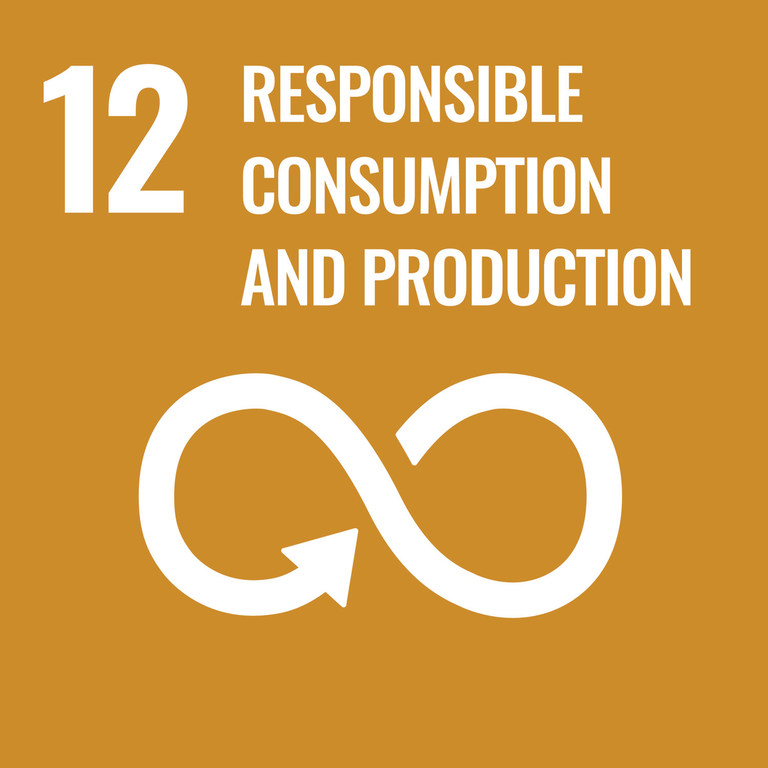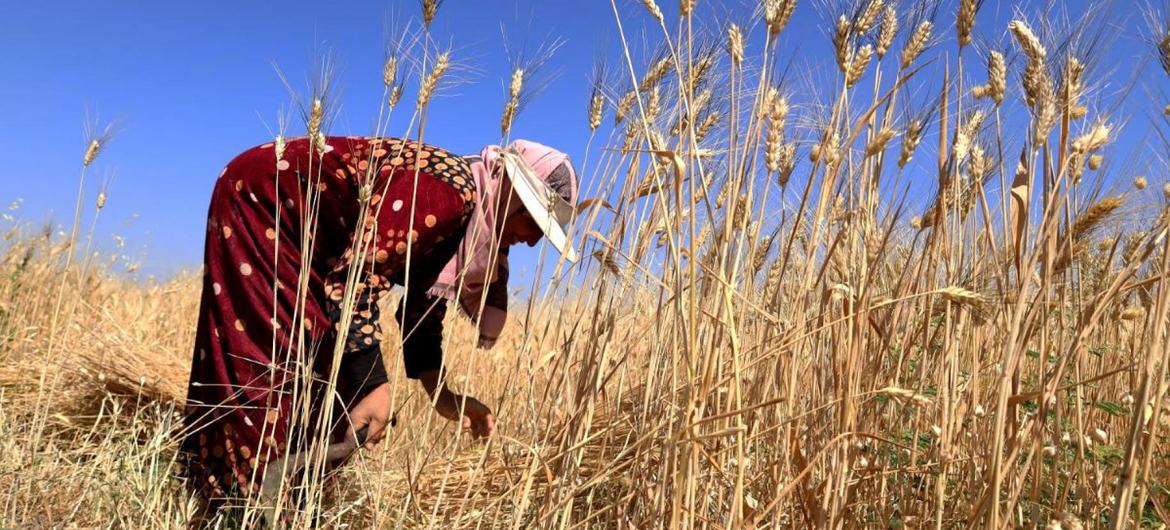Launched in 2015, the Agenda set out a 15-year plan to realize 17 interconnected targets, known as the Sustainable Development Goals (SDGs), and change that trajectory.
In the second of a two-part series, UN News looks at how far the world has come since 2015 in tackling climate change, creating clean energy and sustainable food production and protecting the planet.
2015: Overconsumption, under-protection
In 2015, only a small fraction of the world was officially protected: 14 per cent of land and less than nine per cent of marine ecosystems. One third of global marine fish stocks were being harvested at unsustainable levels.
Meanwhile, more and more plastics were polluting the world’s oceans, rivers, and lakes. By 2015, 60 per cent of all plastic ever produced was discarded as waste.
All country commitments to reduce greenhouse gas emissions combined put the world on a trajectory of a 3°C temperature rise by 2100, compared to pre-industrial levels.
That is double the 1.5°C global temperature rise that a series of UN reports, scientists and governments agreed would help to avoid the most destructive impacts of higher temperatures and maintain a liveable climate.

SDG 12
SDG 12: SUSTAINABLE PRODUCTION AND CONSUMPTION
- Achieve sustainable management and efficient use of natural resources
- Halve per capita global food waste at retail and consumer levels and encourage companies to adopt sustainable practices
- Support developing countries to strengthen their scientific and technological capacity to move towards more sustainable consumption and production patterns
- Implement policies to promote sustainable tourism that creates jobs and promotes local culture
- Phase out inefficient fossil fuel subsidies that encourage wasteful consumption
Despite calls for a global phase-out, fossil fuel subsidies doubled between 2020 and 2021, in large part due to global crises.
2023: Stopping the war on nature
At the halfway mark to the 2030 deadline, global awareness of biodiversity protection has increased, but efforts to transform human interaction with nature and resource consumption still lag behind in terms of speed and scale.
In 2023, three quarters of land on Earth and about 66 per cent of the marine environment have been significantly altered by human actions. More than one third of the world’s land surface and nearly 75 per cent of freshwater resources are now devoted to crop or livestock production.
Combined with skyrocketing levels of pollution, the degradation of the natural habitat and biodiversity loss are having serious impacts on communities around the world.
In 2023, an estimated 100 to 300 million people are at increased risk of floods and hurricanes because of loss of coastal habitats.
Many communities are building back better, from Pakistan’s launch of the biggest climate initiative in the country’s history to the UN Secretary-General’s new global Early Warnings for All initiative.

Increasing investments in solar, wind power, hydropower and biomass will be essential to reduce global reliance on coal and oil.
2015: Fossil fuel versus clean energy
When the SDGs were adopted in 2015, 87 per cent of the world had access to some form of electricity, but nearly 1.1 billion people did not, with most living in Africa and Asia.
Oil prices plunged to an all-time low and fossil fuels dominated the market with global investments amounting to nearly $1.3 billion. Coal alone accounted for nearly 40 per cent of global electricity generated.
But, just 60 per cent of the world’s population had access to clean cooking fuels; the numbers in sub-Saharan Africa were much lower.
Women, in particular, bore a heavier health burden as a result, were vulnerable to indoor air pollution and respiratory disease.
2023: Drive towards renewables
A drive towards clean energy is making some inroads. While 91 per cent of the world now has access to electricity, progress hasn’t been fast or inclusive enough. The number of people with access to electricity has increased to 675 million since 2015.
Global investment in clean energy has hit near record highs at $ 1.7 trillion, and renewables now account for more than 28 per cent of global electricity, growing by nearly 5 per cent since 2015.
Nevertheless, 2.3 billion people still continue to rely on coal, kerosene or solid biomass as their primary cooking fuel. A lack of clean cooking is contributing to nearly 3.7 million premature deaths annually, with women and children most at risk.
About 80 per cent of the world’s population without electricity continues to live in rural areas, predominantly in sub-Saharan Africa.
Studies now show that meeting these clean energy goals will require the world to triple its annual investments between now and 2030. Nations are already walking the talk, from Indonesia’s Just Energy Transition Partnership to a fresh approach of the Nairobi Declaration, adopted in September at the African Climate Summit.

SDG 7
SDG 7: CLEAN ENERGY FOR ALL
- Increase share of renewable energy globally
- Double global rate of improvement in energy efficiency
- Expand infrastructure and upgrade technology for supplying modern, sustainable energy services
- Enhance international cooperation to facilitate access to clean energy research and technology, including renewable energy, energy efficiency and advanced and cleaner fossil-fuel technology
- Expand infrastructure and upgrade technology for supplying modern and sustainable energy services for all in developing nations, in particular least developed countries, small island developing States and land-locked developing countries
International funding for clean energy in developing countries has dropped to just $10.8 billion in 2021 from a peak of $26.4 billion in 2017.
2015: Zero hunger pledge
When the SDGs were adopted in 2015, more than 795 million people were facing hunger. That is 11 per cent of the global population.
In countries enduring protracted crises, hunger rates were more than three times higher than elsewhere. Poor nutrition contributed to impaired growth and development for 159 million children under age five.

A woman shops at an indoor market in Hissar, Tajikistan. (file)
2023: New approach to food security
The question of how food is produced, traded and consumed in a sustainable manner has come to the fore, with one third of all food produced globally ending up lost or wasted and more than three billion people unable to afford healthy diets.
The prevalence of hunger has dropped only marginally since 2015, to 9.2 per cent of the global population. Progress has been frustrated by the COVID-19 pandemic and the rise in climate shocks and conflict, including the Russian invasion of Ukraine, which has driven up the costs of food, fuel and fertilizers.
In 2022, approximately 735 million people faced hunger, which is still well above the pre-pandemic level, and 148 million children still faced stunting from poor nutrition; just over a two per cent decrease since 2015.

SDG 2
SDG 2: END FOOD INSECURITY
- End hunger and malnutrition, and ensure access to safe, nutritious and sufficient food year-round for all
- Double small-scale food producers’ agricultural productivity and income
- Ensure sustainable food production systems, and implement agricultural practices that increase productivity/production and strengthen capacity for adaptation to climate change and disasters
- Correct and prevent trade restrictions in world agricultural markets
Globally, one in three people struggles with moderate to severe food insecurity.
At the same time, not enough is being done to support developing economies adapt their food production to the impacts of climate change. Small-scale farmers from developing countries produce one third of the world’s food, yet they receive only 1.7 per cent of climate finance.
To transform this trend, the UN Food Systems Summit in Rome in 2021 and a subsequent stocktaking moment in 2023 have provided a platform for countries to share their experience. That led to the launch in July of the UN Secretary-General’s Call to Action for accelerated food systems transformation.

The adoption of more sustainable agriculture practices is key to increasing the productivity and income of rural farmers.

